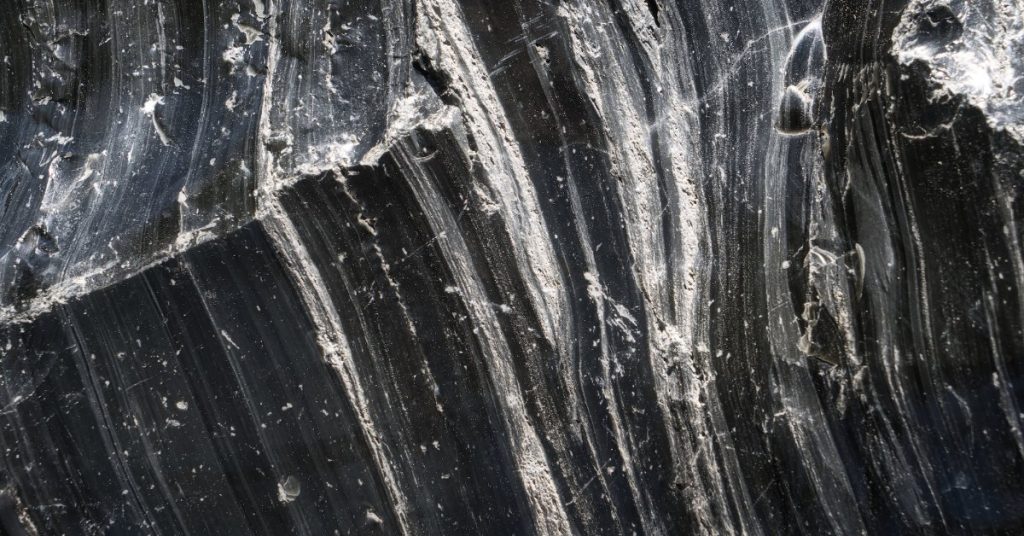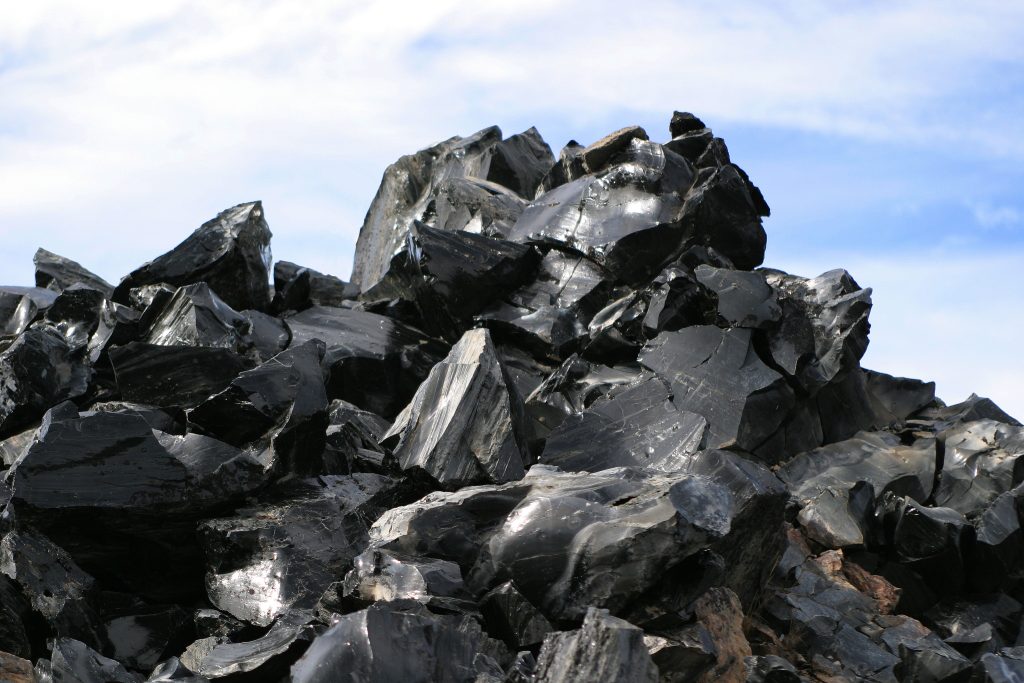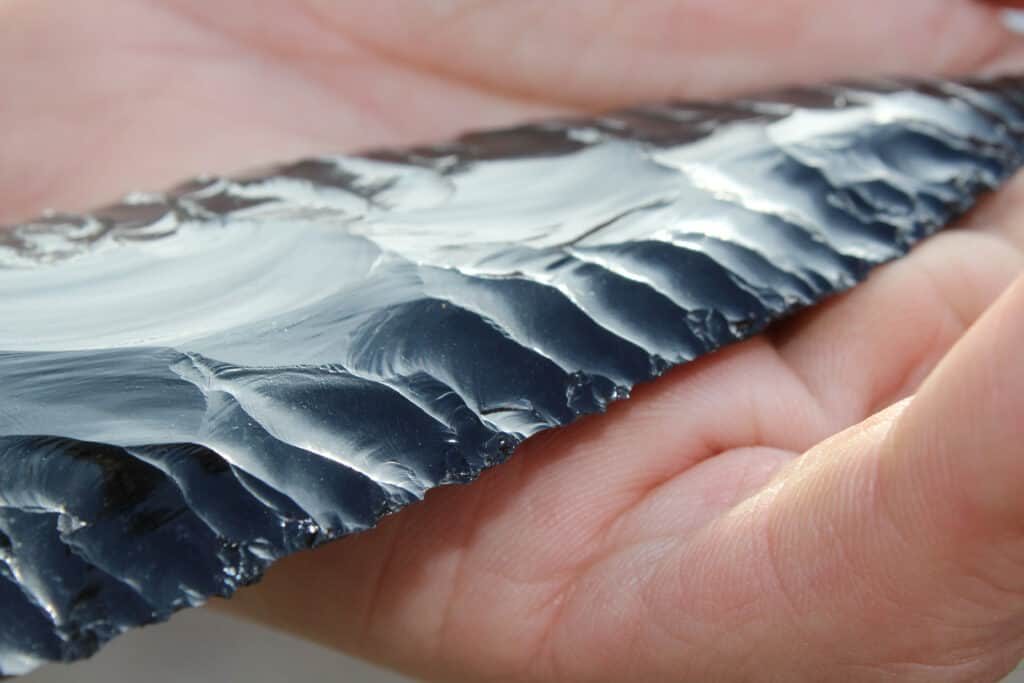When we think about the sharpest knives known to man, our minds might first jump to high-quality steel or perhaps even diamond-edged blades. However, one contender in this category is crafted not from the forges of the industry but born from the heart of a volcano: the obsidian blade. This article will explore the sharpness of obsidian blades and delve into whether they can indeed claim the title of the sharpest knife.

Understanding Obsidian Blades

Obsidian is a naturally occurring volcanic glass formed as an extrusive igneous rock. It’s created when felsic lava extruded from a volcano cools rapidly without crystal growth. This glassy, lustrous mineral is found worldwide and has been used in various tools, including blades, due to its razor-sharp edges.
The properties that make obsidian suitable for blade crafting lie in its unique formation process. When obsidian breaks, it fractures with a distinct conchoidal or shell-like pattern. This process leads to incredibly sharp edges that are just a few molecules thick, significantly sharper than a typical steel knife. The sharpness and precision of obsidian blades have led to their use in various applications, from early human tools to modern surgical instruments.
As we explore further, we’ll understand more about how obsidian blades are made and their applications, especially in the medical field where their ultra-sharp edges are put to use.
How Obsidian Blades Are Made
Creating obsidian blades is a meticulous and delicate process that dates back to prehistoric times. Unlike conventional knives, which are forged and ground, obsidian knives are created through a process known as knapping.
Knapping is the shaping of flint, chert, obsidian, or other conchoidal fracturing stones through the process of lithic reduction to manufacture stone tools. This involves striking the obsidian with a softer material, often a piece of deer antler or a specialized knapping hammer, to chip away and shape the blade. The force applied during this process creates fractures that run through the obsidian, breaking off flakes and leaving behind a sharp edge.
The unique conchoidal fracturing pattern in obsidian allows it to be chipped and flaked into blades that are significantly sharper than traditional metal. When properly knapped, obsidian can create an edge that is just a few molecules thick, which is much thinner than even the sharpest steel blade.
This sharpness is why obsidian blades have been prized since prehistoric times and continue to find use in specialized applications today. Their ability to make precise, clean cuts has made them particularly useful in medical and scientific settings. However, the fragility of obsidian and its tendency to shatter can make working with it more challenging, which is why it’s not commonly used for everyday tools or knives.
The Sharpness of Obsidian Blades

Obsidian blades have been known for their sharpness since ancient times. Because obsidian is a type of volcanic glass, it can be fractured into pieces with edges that are sharper than the finest steel blades. When correctly knapped, obsidian blades can reach a level of sharpness measured at the molecular level, often just a few nanometers wide. This is considerably thinner and sharper than even the sharpest steel blade.
Compared to steel, obsidian blades offer a much cleaner cut. Under a high magnification microscope, the edge of a steel knife appears jagged and torn, while the edge of an obsidian blade appears smooth and even. This results in less tissue damage and faster healing when used in surgical procedures.
Do Surgeons Use Obsidian?
Despite its superior sharpness, the use of obsidian in modern surgical procedures is somewhat limited due to various reasons. One primary reason is the brittle nature of obsidian. While it’s incredibly sharp, it’s also prone to chipping and breaking, which can pose significant risks during surgery.
However, in some specific surgical procedures such as ophthalmic surgeries and plastic surgeries, obsidian blades have been used because the clean cuts they make lead to quicker and less noticeable scarring. It’s important to note that these blades are not made of pure obsidian but are micro scalpels embedded with obsidian fragments.
Can Obsidian Knives Cut Cells?
The extreme sharpness of obsidian blades allows them to cut at a level of precision that extends to the cellular level. Under the right conditions and with a skilled hand, an obsidian blade can indeed cut individual cells without causing the same level of damage that a steel blade might.
The precision of an obsidian blade is so high that it’s been used in research settings to slice thin sections of tissue for microscopic examination. In these contexts, the obsidian blade’s ability to cut at a cellular level is a significant advantage.
However, it’s important to note that while obsidian blades can cut at a cellular level, this doesn’t mean they are routinely used to do so. The fragility of obsidian, coupled with the high level of skill and control required to make such precise cuts, means that they are not the standard tool for most applications that involve cutting or slicing at the cellular level.
The Limitations of Obsidian Blades
While the sharpness of obsidian blades is unparalleled, they do come with certain limitations. The most significant limitation is the inherent brittleness of obsidian. Despite its sharpness, obsidian is a type of glass and is prone to chipping or breaking, especially under high pressure or when used against hard materials. This makes obsidian knives less durable than those made from metal.
Furthermore, crafting obsidian blades requires a specific skill set known as knapping, which is not widely practiced today. This makes the production of obsidian blades more specialized and less widespread compared to metal blades.
Additionally, obsidian blades, especially those used in surgical settings, cannot be sterilized in an autoclave (a common sterilization method in medical settings) as the high temperature could cause the obsidian to fracture.
What Is Obsidian Blades Used For?
Obsidian blades have a few specific uses, mainly due to the exceptional sharpness of obsidian blades:
- Historical and Cultural Use: Obsidian blades were used by various ancient cultures for tools and weapons. Prehistoric people used obsidian to craft arrowheads, knives, and other sharp implements.
- Surgical Scalpels: Obsidian blades can be made extremely thin and sharp, down to a few molecules. This makes them suitable for certain surgical procedures, where the sharpness of the blade can minimize tissue damage and reduce scarring. However, the use of obsidian scalpels is not widespread and is subject to regulatory approval in different jurisdictions.
- Craft and Art: Some artists and crafters use obsidian blades for detailed, delicate work where the sharpness of the blade can be beneficial.
- Display and Collection: Many obsidian knives are crafted for collectors or as display pieces. These often feature intricate designs and craftsmanship, making them beautiful but not necessarily functional.
- Survival Skills Training: Some survivalists use obsidian knives to practice skills such as knapping, which is the process of shaping stone into tools.
It’s important to note that while obsidian can be incredibly sharp, it’s also fragile compared to metal. Obsidian blades can chip or break easily, making them less suitable for many common uses.
Conclusion
In conclusion, obsidian blades are incredibly sharp, capable of achieving a level of sharpness that is superior to most, if not all, metal blades. Their ability to make clean, precise cuts has found niche applications in certain surgical procedures and scientific research. However, the brittleness and other limitations of obsidian mean that they are not suitable for many everyday uses where durability and versatility are required. Thus, while an obsidian blade may be the sharpest, it is not necessarily the best choice for all situations.
References
For more information on the properties and uses of obsidian blades, consider the following sources:
- “How Obsidian blades are still cutting it in modern surgery” – An article discussing the properties and potential uses of obsidian blades.
- “Obsidian use in Mesoamerica” – A scholarly article exploring the extensive use of obsidian in Mesoamerica.






